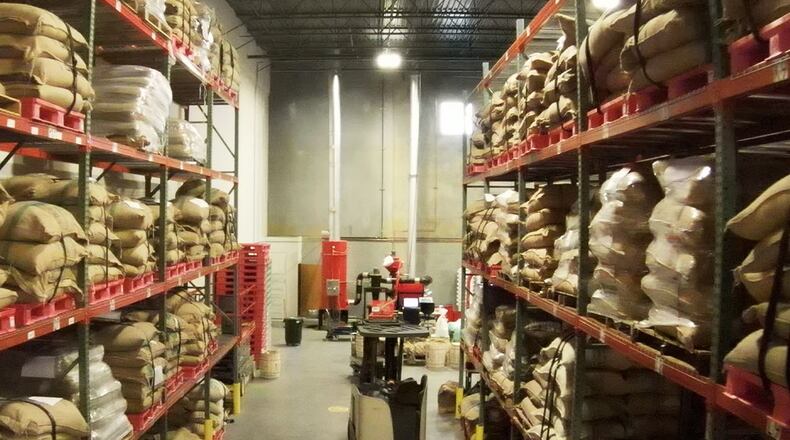The Georgia economy added 13,500 jobs last month, one of the strongest Novembers on record, as the unemployment rate fell to 2.8%, an all-time low, the state Department of Labor reported Thursday.
While hiring was strong, the month also showed evidence of an unprecedented disconnect: Despite growth across a range of job sectors and generally rising wages, the recent hiring surge has not spurred a flow of jobseekers back into the workforce.
When the pandemic shut down shops, factories, restaurants and offices, as well as schools, about 215,000 people left the labor force in Georgia. It remains 32,000 smaller than it was in early 2020 and has grown by fewer than 1,500 during the past seven months. Yet the state’s job site lists 190,000 job openings.
“We have plenty of jobs and we need more people,” said Mark Butler, the state’s labor commissioner. “Job growth is outpacing labor force growth.”
The fastest-growing parts of the economy involve jobs making, storing and delivering goods to consumers — logistics, warehousing and manufacturing — much of the work driven by holiday ordering. But better-paid, white-collar positions are also in demand, said Frank Green, principal managing partner at ExecuSource, which places workers in accounting, healthcare and tech positions.
“Everybody is hiring — every role, every job, every career, every location,” he said. “I have never seen that before.”
As companies scrambled to fill openings, workers increasingly have been offered more choices among employers, along with higher wages, better benefits and more flexibility. What has been dubbed “The Great Resignation” is in many ways, just a widespread worker realization that they have choices among employers, he said.
“They can get more money or work from home? Of course, they’ll switch,” he said.
Among those hiring for blue-collar, front-line jobs, there is a similar jostling for employees, said Jill Eubank, vice president of sales and customer experience at national staffing company Randstad.
“This is a weekly conversation that we are having with a lot of companies,” she said. “We are often asked, ‘What do I have to pay?’”
The answer, she said, is often: More.
A warehouse that offered $13-an-hour in starting pay two years ago must now pay $16 or $17 to find workers, she said.
Even in normal times, people stop working to become caregivers, retire, take a break, return to school or because they are discouraged about finding a job. Usually, robust hiring draws many of them back into the labor pool. But now, few people are jumping back in, so companies are siphoning from a shrinking pool.
Younger people have not made up the difference, and immigration has been dramatically down the past several years.
That smaller pool is a key reason the unemployment rate — which only counts those who are looking — has fallen so far. The jobless rate nationally is 4.2%.
Most federal programs that had bolstered the finances of the pandemic-unemployed ended. So those still on the sidelines include some struggling with childcare, some who were killed or disabled by COVID-19 and some who decided to get by on a partner’s income.
“The pandemic is the gorilla in the room,” said labor economist Ian Schmutte at the University of Georgia. “A significant chunk of population continues to have concerns about contracting COVID or bringing it home.”
The omicron variant just renews that worry, he said. “And that acts as a drag on labor force participation.”
Many of those holding back have a different outlook than in the past, Butler said. “The pandemic has reset the way people look at life in general, and that has to mean a change in the workforce.”
Overall, the biggest factor in the loss of available workers is demographic — older workers are retiring faster than new ones are entering the job market, he said. “There is no doubt in my mind that the baby boom generation is checking out and they are not coming back.”
Georgia economy
Job growth
November, 2021: 13,500
Average November, pre-pandemic: 2,750
Unemployment rate
November, 2021: 2.8%
October, 2021: 3.1%
Pre-pandemic low: 3.4% (Dec. 2000)
Unemployed
Nov. 2021: 146,218
Feb. 2020: 179,769
Change in Labor Force*
Nov. 2021: -235
Since Feb. 2020: -32,000
Average pre-pandemic November: 3,465
Change in jobs since Feb. 2020
Couriers and messengers: +23%
Warehouse and storage: +22%
Construction: +6%
Retail: +2%
Manufacturing: -2%
Arts, entertainment, recreation: -6%
Air transport: -8%
Food service and drinking: -10%
Accommodations: -13%
*Those working or looking for work
Source: Georgia Department of Labor, Bureau of Labor Statistics
About the Author
Keep Reading
The Latest
Featured

